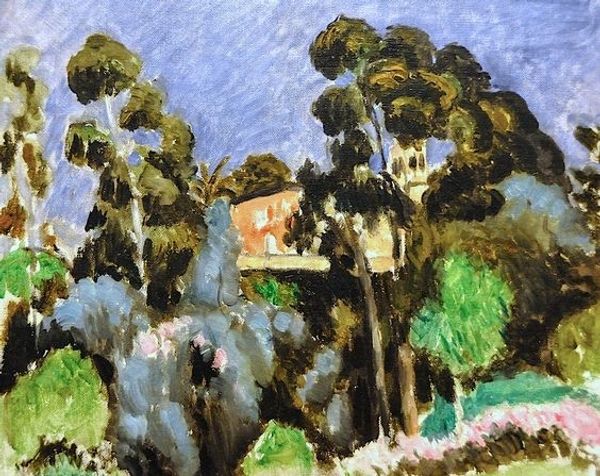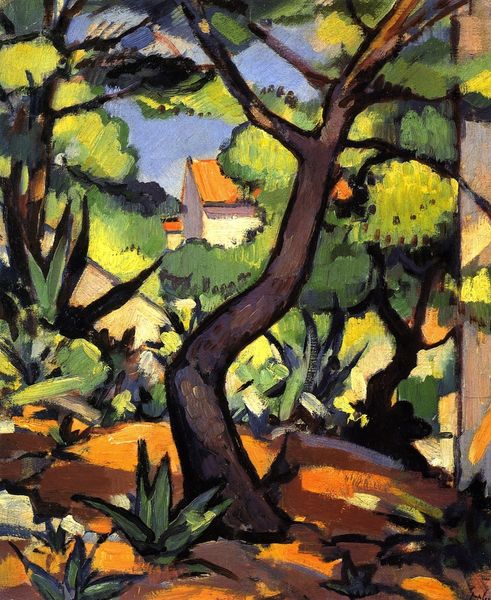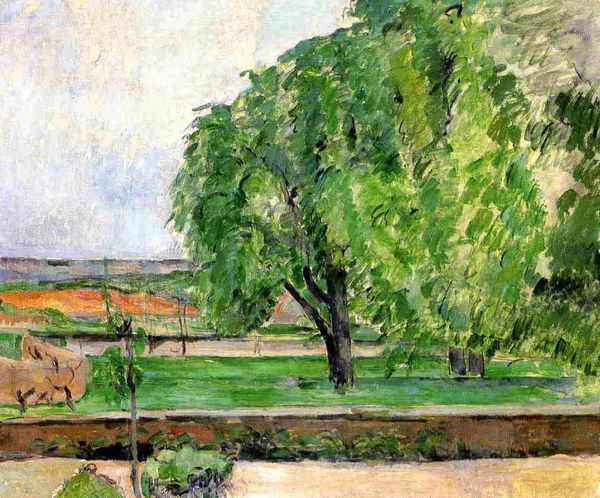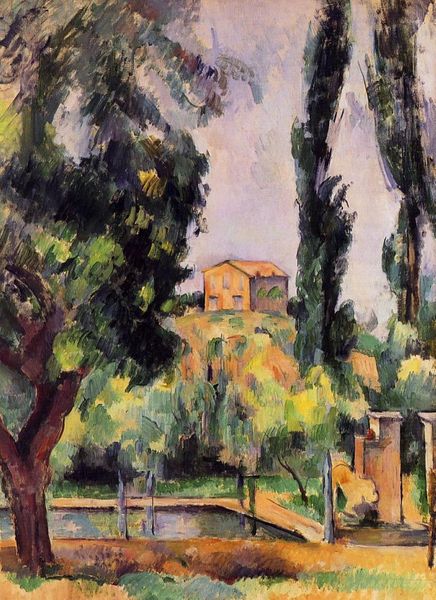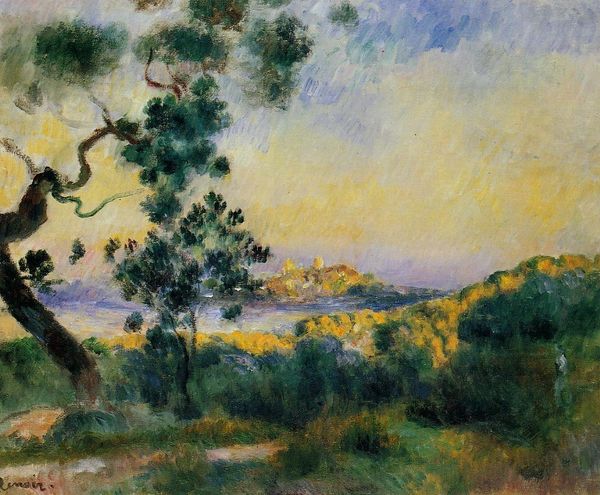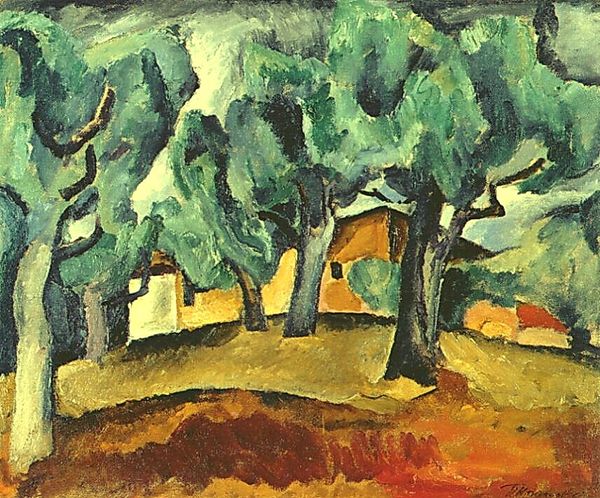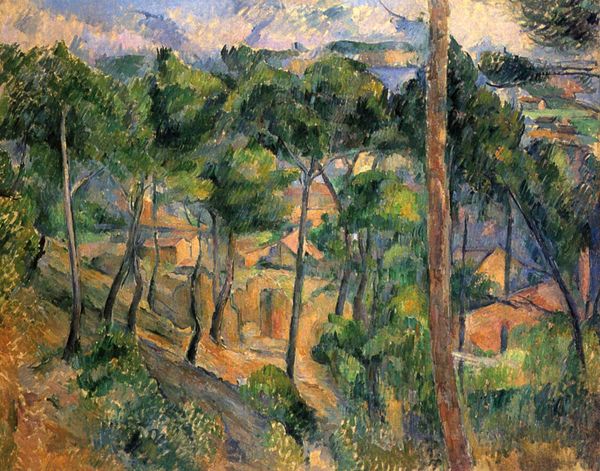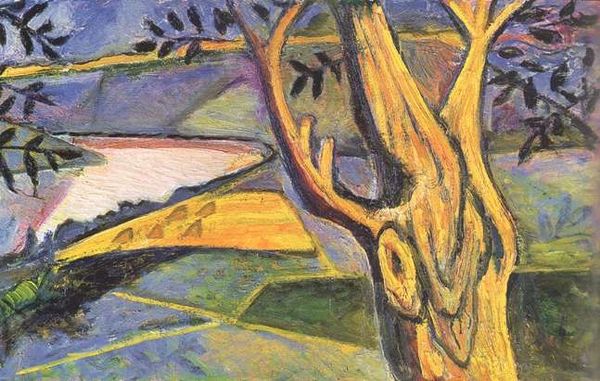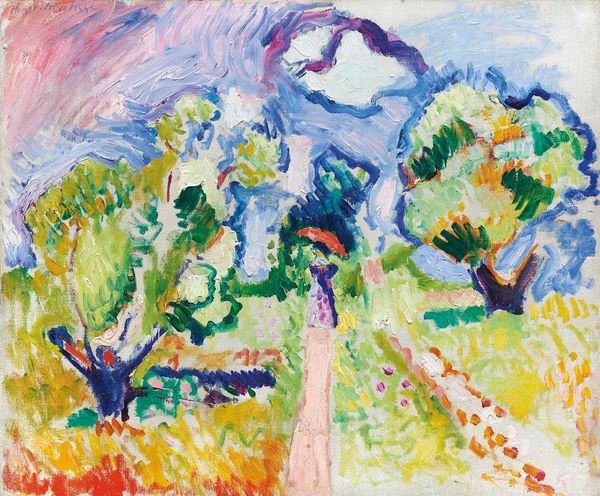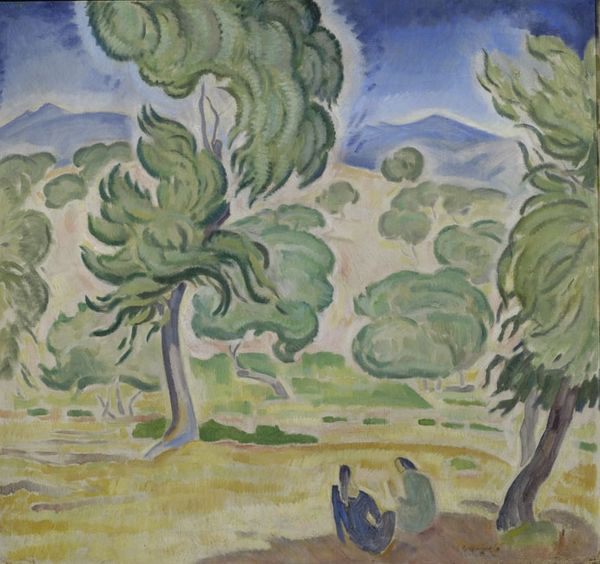
Copyright: Henri Matisse,Fair Use
Curator: Henri Matisse painted “The Large Pine” in 1926, employing oil on canvas to capture a striking landscape. What's your initial impression? Editor: It strikes me immediately as tactile, even edible, almost cake frosting like—that texture really makes it come alive! Curator: The pine tree in this artwork appears massive and all encompassing, reaching almost out of frame—pine trees were potent symbols, often linked to resilience, longevity, and even immortality across cultures. What’s the material story? Editor: Look at those brushstrokes—so direct! You can almost feel Matisse wrestling with the paint. Oil lends itself well to this impasto technique and these colours, the luscious green sitting heavy atop the strokes in sky-blue below it. It feels really immediate in its production, less illusionistic window more present. Curator: I think there is definitely something psychological and symbolic being portrayed; do you believe that Matisse would choose such potent symbology randomly? The texture enhances the raw emotion. How would you contextualise this material expressivity in Matisse's other landscapes of the time? Editor: Well, earlier, say, in Nice in the early 1920s, his landscapes had a flatter quality to them, not so invested in materiality itself, whereas, I am convinced, here the texture IS the message: in fact, the means *is* the meaning here! Curator: I can appreciate that point of view. "The Large Pine", for me, encapsulates a timeless yearning, the enduring power of nature made immortal on canvas, reflecting deeply human emotional states with colour theory that enhances how we look at a space, a place. Editor: Yes! And thanks to oil paint's qualities and materiality and thickness, it reminds us, here in front of this artwork, about how vital that relationship actually is.
Comments
No comments
Be the first to comment and join the conversation on the ultimate creative platform.
